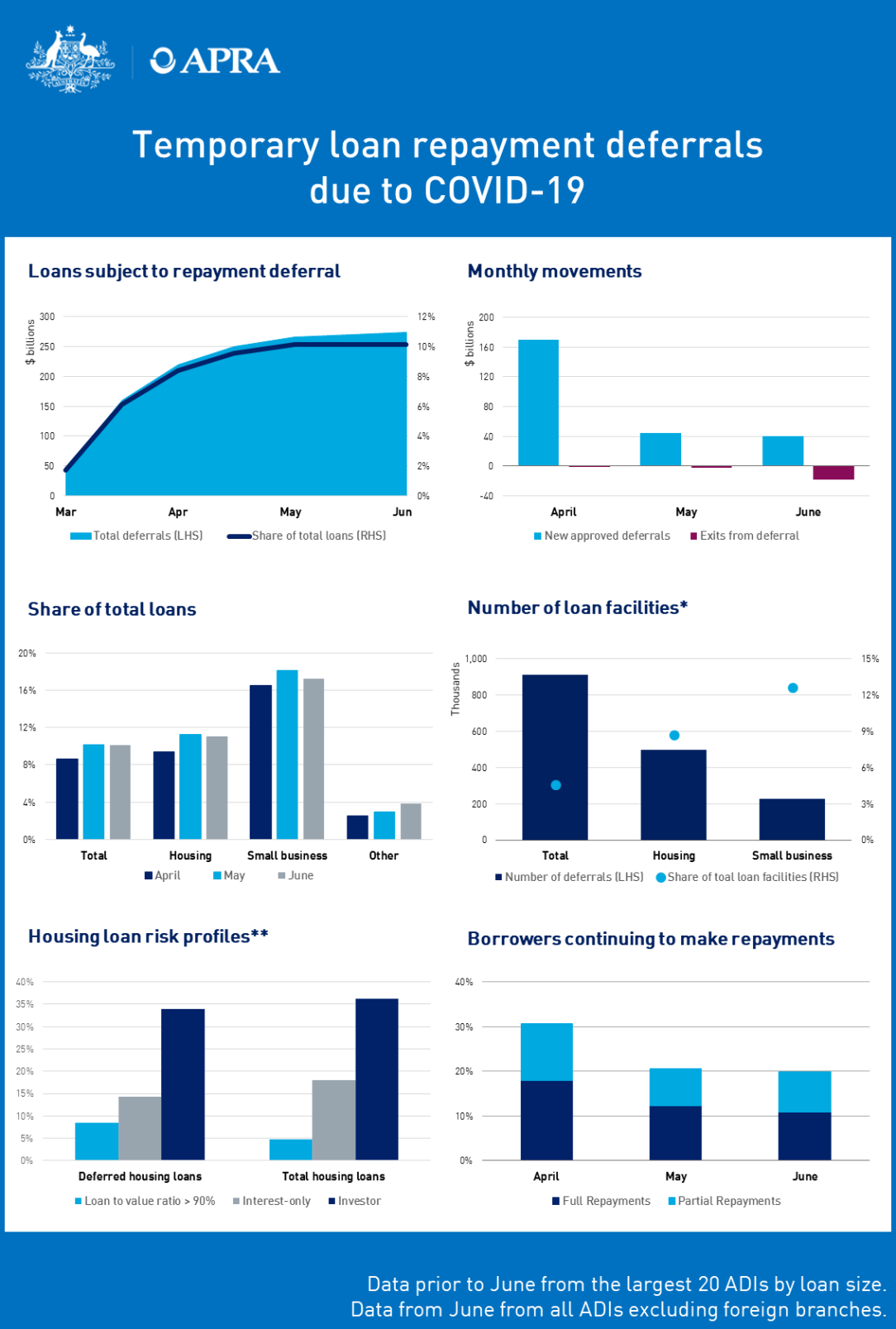Temporary loan repayment deferrals due to COVID-19, June 2020
Many authorised deposit-taking institutions (ADIs) have granted temporary relief to borrowers impacted by COVID-19, allowing them to defer loan repayments for a period of time. To provide greater transparency of loan repayment deferrals at the industry level, APRA is publishing the aggregated data obtained from all ADIs in Australia, excluding foreign branches.

*the number of facilities does not necessarily indicate the number of borrowers as individual facilities with more than one repayment type may be reported more than once.
**to give an indicator of potential elevated risk in loans subject to deferral this chart compares loans subject to deferral to total loans across three key cohorts - loan to value ratio of greater than 90 per cent, investor loans and interest only loans.
An accessible version of the dashboard, with data labels, is available here.
Additional commentary
| Deferred loans | Total loans | Deferred loans, share of total loans |
Total | $274 billion | $2.7 trillion | 10% |
Housing | $195 billion | $1.8 trillion | 11% |
Small business | $55 billion | $321 billion | 17% |
As at 30 June, data submitted by all ADIs indicates that $274 billion worth of loans have been granted temporary repayment deferrals, which is close to 10 per cent of total loans outstanding. Housing loans make up the majority of total loans granted repayment deferrals, although small business loans have a higher incidence of repayment deferral with 17 per cent of small business loans subject to repayment deferral, compared with 11 per cent of housing loans.
Overall the composition of loan repayment deferrals remains relatively stable with the most noticeable change being increased loans exiting from repayment deferral, from $2 billion in May to $18 billion in June. The majority of these loans have returned to a performing status. The housing risk profile shows that housing loans granted repayment deferrals are more likely to be extended to owner-occupier borrowers, subject to principal and interest repayments, and have higher loan to value ratios than all housing loans.
The temporary repayment deferral programs were implemented within tight timeframes and the data has been submitted to APRA on a best endeavours basis. As ADIs improve their ability to capture these data items, resubmissions are expected. APRA will continue to publish this aggregate information on a monthly basis until loans subject to repayment deferrals are no longer a notable component of the ADI industry’s total loan portfolio.
For more information
Email dataanalytics@apra.gov.au or mail to
Manager, External Data Reporting
Australian Prudential Regulation Authority
GPO Box 9836, Sydney NSW 2001Looking for discontinued publications?
Search historical snapshots of APRA's website on the Australian Government web archive.